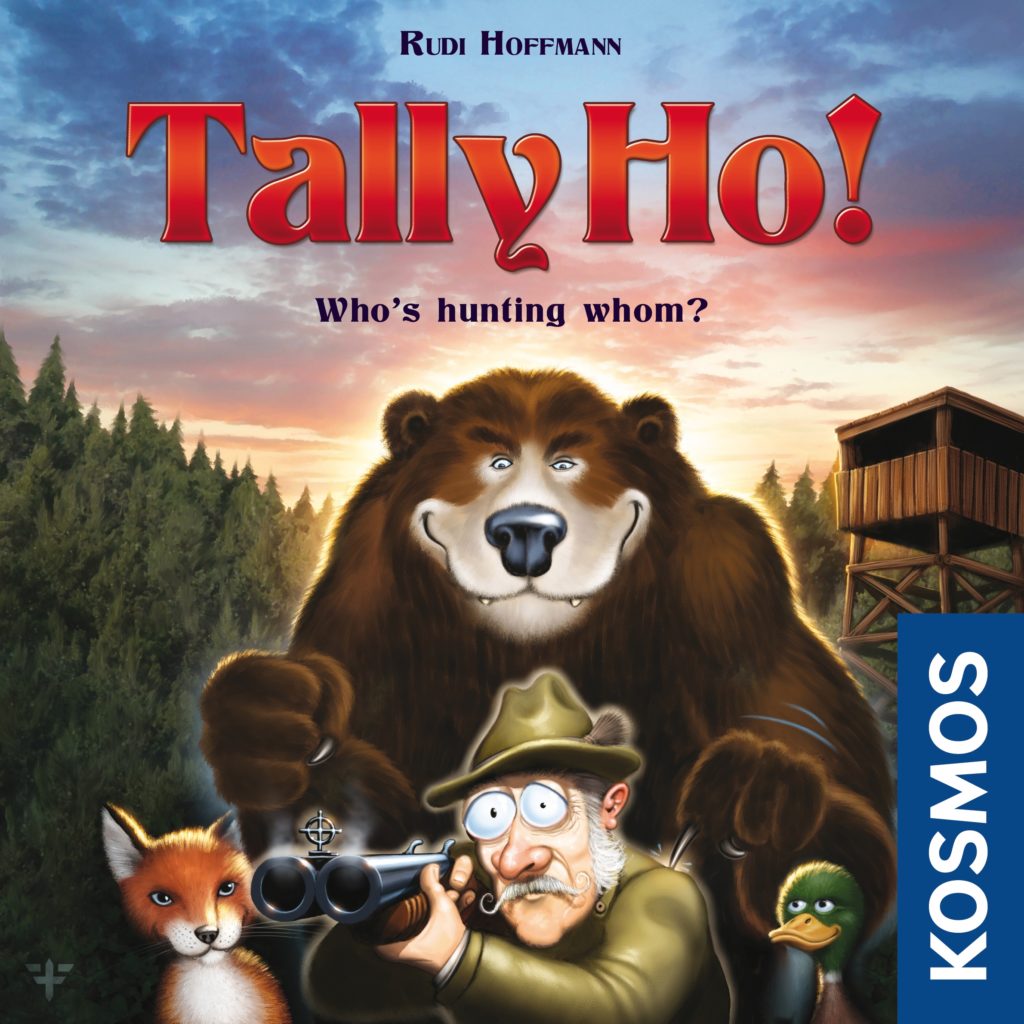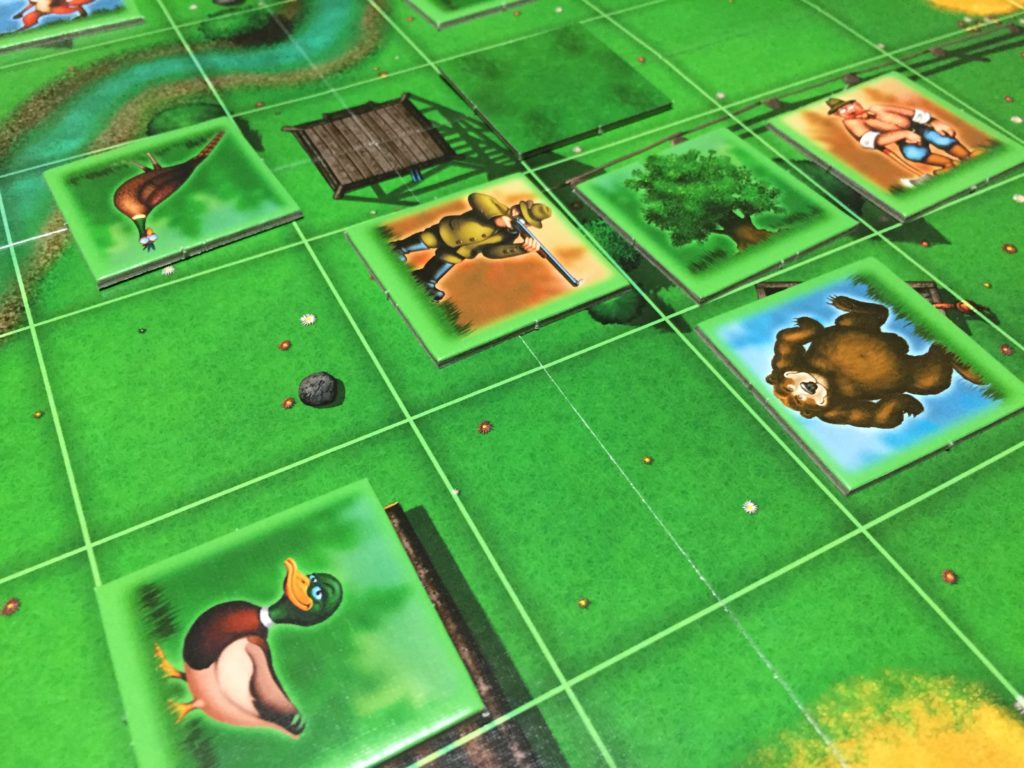I’m not what you would call an outdoorsman, especially when it’s muddy and/or cold. Call me crazy, but most of my time is spent indoors either being a parent, reading a book, or playing/reviewing a game of some type with the family. While “Tally Ho!” revolves around the idea of two players hunting each other, they can do so without leaving the comfort of their dining room table. One player will take on the role of the hunters and lumberjacks while the other plays as the bears and foxes. They can both hunt neutral game like ducks and pheasants to earn points, or simply hunt each other based on their individual movement / hunting rules. Before I get into all that however, I’d like to thank Eve Vergnes from Southard Communications, Inc. for providing me with a press copy for review purposes.

Tally Ho!: 2 Players, Ages 8+, Average Play Time = 20 Minutes
Components
The game includes 1 board, 8 tiles with a blue background (2 bears and 6 foxes), 10 tiles with a brown background (2 lumberjacks and 8 hunters), 30 tiles with a green background (7 ducks, 8 pheasants, and 15 trees), and a rulebook.
Setup & Gameplay
To set up the game, players shuffle the tiles face-down and place them on the board, leaving the middle space empty. They then decide who will play blue (bears and foxes) and who will play brown (hunters and lumberjacks). The blue player goes first, with players alternating turns.
On a player’s turn, they’ll either flip a face-down tile face-up or move an existing face-up tile. It’s important that when a player does the former that they do so by flipping from the bottom up, as the orientation of some tiles are important. There are a number of rules involved when moving an already existing tile but to some it up, blue can only move blue and brown can only move brown. Green animals can be moved by either player while trees may not be moved at all. The bear and lumberjack may only move one space and all tiles have to move both orthogonally and through empty spaces. After flipping a green tile, that player’s opponent may not move it on their next turn. Players may also not return to a space in which it started on that same turn.
To score points, players will be using their colored tiles to remove other tiles from the board. A lumberjack only removes trees while the hunter may only remove animals that are in front of the hunter. The hunter, when flipped, may not change his orientation though he may do so after moving to an empty space. A bear may only remove the hunter and lumberjack, while the fox may only remove pheasants and ducks.
When the last tile is turned over, each player takes five more turns and the game ends. During this time, players may remove their own tiles from the board for extra points by moving it through one of the four exits. The game ends immediately however if all tiles have been turned face-up and there are no more tiles of a particular player color on the board. Players then count up their points, switch roles, and play one more game. After that, they sum up their points from their two games and whoever has the most, wins!
Editor’s Note: The above doesn’t cover all of the rules found in the manual, but should give you an idea as to how the game is played.

The Review
“Tally Ho!” turned out to be a fairly decent two player game. There’s a bit more luck than there is strategy since you really have no idea what you’re flipping over when you decide to take that action, but the strategic part does set in later in the game as more empty spaces present themselves. As the animals, positioning yourself in a way to where the hunter can’t get a clear line of sight with you is key, though this gets harder to do as more tiles are removed from play. The lumberjack, as you can imagine, can help out quite a bit since trees can’t be moved and provide some great cover for the animals. I like the idea of playing two rounds as I felt more empowered as the hunter than I did with the bear. Then again, racking up points by taking out neutral game with your foxes is a great way to counter this.
From a tactile standpoint, the game’s components are good and the rules easy to understand, though I wish the tile backs didn’t blend in so much with the board. There’s a slight learning curve with how the animals move and hunt, so it may take a few games to really develop strategies with what you have available to you at the time. Bears and lumberjacks, for example, only move one space whereas the hunter can only hunt game in the direction he’s pointing. It’s really not all that difficult to follow, it just takes a small amount of time to get used to how everything flows and what the best ways to go about earning points are. “Tally Ho!” is great for kids as blood and violence are not depicted, save for the idea of hunting animals/humans in the first place. All in all, “Tally Ho!” serves as a pretty good filler for a gamer couple or parent/child pairing looking to knock out something quick when time is at a premium.
Final Verdict: 7/10
—
